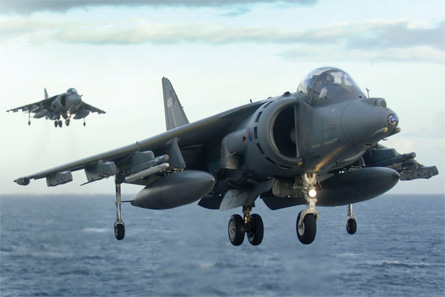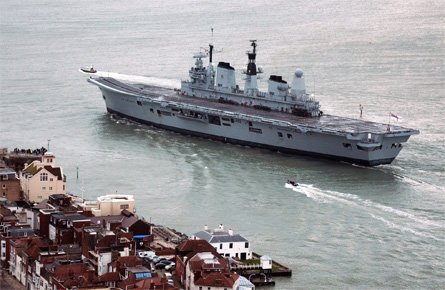The UK's most senior military officers have taken the unusual step of responding publicly to criticism over the cuts contained within the nation's recent Strategic Defence and Security Review.
An open letter was published in The Times on 12 November, signed by officials including new chief of the defence staff Gen Sir David Richards and chief of the air staff Air Chief Marshal Sir Stephen Dalton. Their response was aimed specifically at concerns over a decision to immediately retire the Royal Navy aircraft carrier HMS Ark Royal and to remove the UK's remaining BAE Systems Harrier GR9s from use by 31 March 2011.
"The decision to withdraw Harrier from service and to retain a reduced [Panavia] Tornado force had to balance our current needs in Afghanistan with the intent to rationalise our fast jet fleets," the chiefs say. "After very careful consideration our military advice was to retain the more capable Tornado. Harrier's contribution has been huge, but the decision to withdraw it is the right thing to do in the circumstances and a decision that we collectively agreed."
 |
|---|
© LA (Phot) Des Wade/Royal Navy |
Ten Tornado GR4s are currently deployed at Kandahar airfield in Afghanistan in support of the NATO-led International Security Assistance Force mission in the country.
A group of retired senior RN officials had lobbied the government to reverse its decision to scrap the Ark Royal, saying that losing the service's carrier strike capability would make the UK unable to defend the Falkland Islands.
 |
|---|
© Mike Walker/Rex Features |
The Ark Royal left Portsmouth for the last time on 9 November |
"We keep our plans for protecting the Falklands under close review at all times, and can assure you they are robust and able to defend against any and all likely threats," the chiefs say. Unlike when Argentina invaded the islands in 1982, the UK now has in place "surface ships, submarines, a well-defended airfield with [Eurofighter] Typhoon jets and a strong land component with an ability to rapidly reinforce if necessary", they note.
While the officials concede that the SDSR process "has led to a range of decisions that we would not have otherwise chosen to make", they say that "the financial constraints the department faced meant that it would have been irresponsible to try to avoid them. The decisions made were collectively reached and supported. We stand by each of them. We must now move on with its implementation."
The RAF's Tornado GR4 force will be reduced to a minimum of five frontline squadrons and an operational conversion unit as a result of the cuts, which are also expected to see the entire fleet based at the service's Marham air base in Norfolk.
Dalton says the Typhoon force will meanwhile be grown "as quickly as practicable to become the core of our defensive and offensive combat capability". The RAF and RN Fleet Air Arm will also receive Lockheed Martin's Joint Strike Fighter in the F-35C variant, allowing operations from one Future Aircraft Carrier from around 2020.
Source: Flight International











































